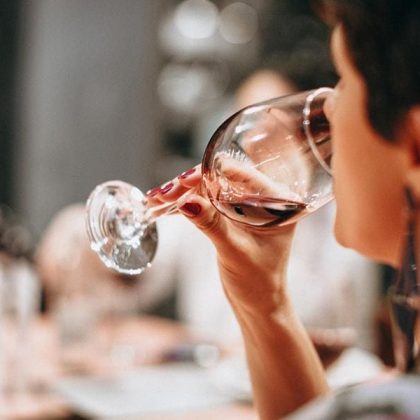No Gigondas without Grenache!
Grenache is considered the undisputed king of the southern Rhône Valley. At Gabriel Meffre, it actually accounts for between 65% and 70% of the grapes grown in our vineyards. While it originally hails from Spain (where it is known as Garnacha), the variety has put down deep roots in the region where it is the dominant grape in most appellation wines. It certainly has at Domaine de Longue Toque.
For instance, in the Gigondas appellation established in 1971, the blend must contain a minimum of 50% Grenache. Our Hommage à Gabriel Meffre cuvée, blended from a selection of the oldest Grenache on the estate (60-100 years old), is up to 98% Grenache.
Different terroir, different expression
Grenache is a fascinating variety because its expression varies with the terroir.
On sandy soils, its character is expressed through delicate tannins and plenty of finesse and suavity indeed, the grape is often compared to the Grenache style produced on the sandy terroirs in the Châteauneuf du Pape AOC.
Limestone soils, situated at between 300 and 500 metres altitude, lend Grenache a beautiful freshness with a hint of minerality and an almost saline finish.
Terroirs of sandy limestone and marl, meanwhile, combine both expressions to form a harmonious whole, producing Grenaches that are at once powerful and suave accompanied by incredibly delicate tannins.
Growing Grenache
Grenache is a generally vigorous vine suitable for close pruning, following the gobelet method. It is extremely resistant to drought and certain diseases. On the flip side, the variety is more prone to grape shatter, a viticultural hazard that can occur during flowering and prevent grapes developing into maturity. The effect can be significant depending on the time of year and climate.
This was unfortunately what happened in 2017: “Flowering occurred during a sweltering June and the flowers failed to produce much fruit. The yields were tiny,” remembers Antoine Dupré, Vineyards Director.
Making Grenache
This is a fantastic variety that is well worth the wait! Much like Pinot, Grenache is naturally inclined to oxidation which makes vinification a relatively more complex process. Gigondas undergo maceration for around 30 says after which they are aged for 14 to 18 months depending on the vintage, in vats or demi-muids (600-litre capacity oak barrels) When bottled, Grenache makes an excellent “vin de garde”. After a spell in the cellar, it can bear a certain family resemblance to Burgundy Pinot noirs.
What can you expect from a Grenache?
Raspberry is the most characteristic aromatic note of Grenache. Depending on the terroir, this raspberry note will show varying degrees of acidity or maturity. However, if this quality is well pronounced on the nose and palate, the winegrower can feel satisfied: he has stayed faithful to the variety’s true expression!
In term of pairing a predominantly Grenache blend with food, Antoine has the perfect match with a Gigondas “Hommage à Gabriel Meffre” : “I especially love to drink this wine with game accompanied by cranberries. Its flavours are really highlighted by a dish with quite a strong meaty flavour, especially when there is a sweet and sour combination going on.”
From Gigondas to Vacqueyras and Côtes du Rhône Villages Plan de Dieu, Grenache can be found in almost every red wine in the southern Rhône Valley. Now it’s time for you to explore the various expressions of Grenache in our wines, be it blended with Syrah, Mourvèdre or Cinsault!
Rubrics
Découvrez plus d'articles...

The vineyard and wine cellar in winter
What happens in the world of wine during the winter period? After the hustle and bustle of autumn, the harvests and vinification process, comes winter, a season devoted to maturation and looking after the vines.

In 2018, we will continue to strive to be a Responsible Company!
In this new year, our wish to help build a world that respects both mankind and the environment is as strong as ever. This can be seen through the number of our projects for 2018 that are closely related to our convictions as a Responsible Winery. We’re delighted to be given the opportunity to tell you about them!

Discovering the art of pairing wine and chocolate
A morsel of white chocolate, Black Forest gâteau, pieces of stem ginger wrapped in chocolate, or Mexican chicken in chocolate sauce—all very appetising, but which wine would you serve with each one? Food and wine pairings factor in a combination of elements, such as the terroir, our powers of concentration, the circumstances of the tasting session, our sense memory and more. We guide you through some of the basic principles of this fascinating world!







